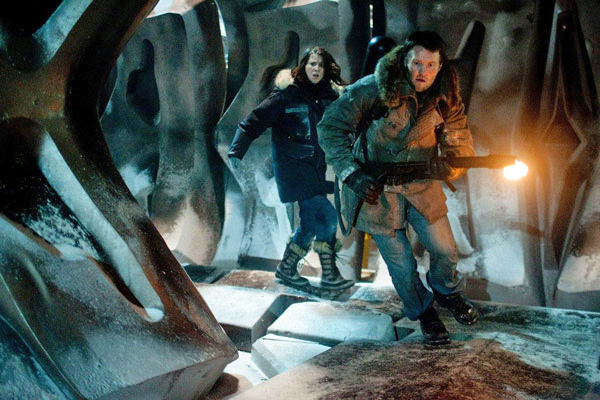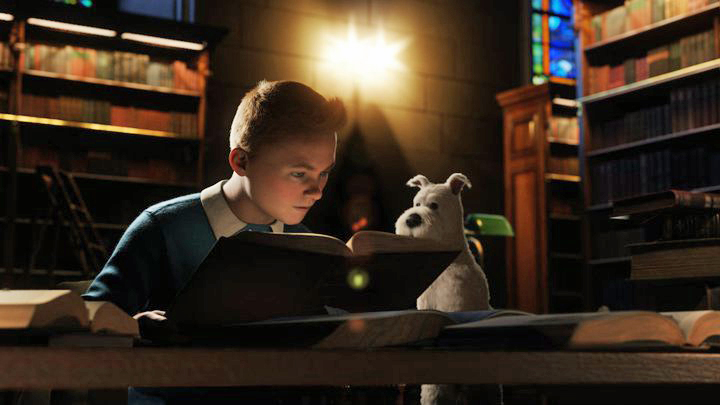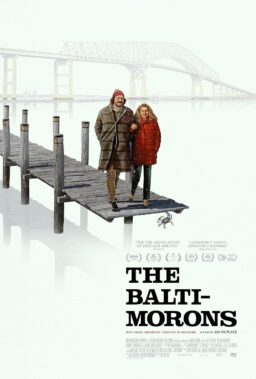Q. The great Sir Alfred Hitchcock was a busy worker right up until his death, and was working on a film when he died. From what I’ve heard, the screenplay and carefully-drawn story boards were finished. My question is, why hasn’t anyone opted to make THIS film? Wouldn’t this have been a better idea for Gus Van Sant than a remake of Hitch’s best-known work? (Jeff VanDreason, Syracuse, NY)
A. In 1977 and 1978, Hitchcock worked on a screenplay titled “The Short Night” with Ernest Lehman (“North by Northwest”) and David Freeman, but Hitch’s biographer Donald Spoto says the script was never finished. If it had been, or if other finished scripts survive–yes, those would be more interesting projects than squirting juice into the Frankenstein’s monster of the “Psycho” remake.
Q. I’ve been hearing that “Babe: Pig in the City,” is too dark, and that darkness is a trend in kid’s movies. This sentiment is being blamed for “Babe’s” less than stellar box office. I saw “Babe” and thought that while it was more intense than most children’s movies of late, it wasn’t as intense as such classics as “Willy Wonka and the Chocolate Factory,” and that any darkness was justified by the unabashedly optimistic ending. In your opinion, are children’s movies becoming too dark for younger viewers? (Paul Bogosian, Watertown, MA)
A. “Babe: Pig in the City,” one of the year’s most magical films, has been the victim of two widely-publicized factoids. One is that the film was hammered at the box office by “A Bug's Life” (true). The other is that it was “too dark for children.” Not true. Troublesome for very young children, perhaps. But enchanting and original for anyone else. Dark themes are not new in children’s films. Consider the deaths in “Bambi,” or Mrs. Jumbo’s chaining in “Dumbo.” Reflect, too, that an alarming number of today’s kids routinely see videos of R-rated slasher and horror movies. “Babe” is unlikely to cause many nightmares.
Q. I went to see “Babe: Pig in the City” and I loved it. It is a brilliant piece of work and a rare sequel that outdoes the original. I also found it to be the most ambitious family film I have ever seen. It will easily make my top ten. I was extremely saddened on how the film flopped badly at the box office. I cannot believe such garbage as “The Waterboy” and “The Rugrats Movie” is doing so well. Films like “Babe: Pig in the City” are the ones that inspire me to become a filmmaker. Why did it do so poorly at the box office? (Michael Pereira, Toronto, Ontario)
A. When it comes to family movies, you can’t trounce the Mouse. Universal should never, ever, have opened on the same day as a Disney animated picture. So what if the lucrative fast-food tie-ins were already scheduled? Six weeks either way on the opening date, and the picture’s history would have been dramatically different. Also, more hamburgers would have been sold. It would be a shame if this wonderful movie got lost in the shuffle.
Q. There is an editing technique, used frequently in film and television, in which the audio track of the next scene is cut to before the visual scene is. Thus the viewer hears as much as a full line of dialogue from the following scene before the visual image is edited to actually show the speaker. This technique is very effecting in conveying a feeling of linked, forward plot movement. My question is, what is this editing technique called? There must be a simple name to describe it, as opposed to the paragraph it took me to explain it. (Daniel Welch, Wheaton, IL)
A. I asked Thelma Schoonmaker, the gifted editor of such Martin Scorsese classics as “Raging Bull” and “GoodFellas,” for an answer. She replies: “The term your questioner is looking for is ‘sound overlap’ or ‘sound prelap.’ He is right that the device does convey a feeling of linked forward movement. It is also used sometimes when you are having difficulty with a transition and a sound overlap can trick the eye into accepting what might, otherwise, be an awkward cut.”
Q. Many moviegoers have noticed parallels between the Gene Hackman character in “Enemy of the State” and his classic character Harry Caul in Francis Coppola’s “The Conversation” (1973). Here are some more. The clerk in the electronics store addresses Brill as “Harry.” And the identity photo of Brill in the NSA’s data base is a shot of Gene Hackman from “The Conversation.” (Bill Mullins, Huntsville, AL)
A. Also, when Hackman takes Will Smith into his secret hideout, the set-up, with electronic equipment locked behind steel mesh, is very similar to his rig in “The Conversation.”
Q. Did I miss something or was there a mirror image shot in “One True Thing“? In the scene where Rene Zellweger’s character first overhears her mother talking with her father’s friend looked like a mirror image because all the lettering on the books were backwards. And there’s a later scene in the same room where everything is reversed. Why would they do that? Was it a heavy handed way to symbolize a world in turmoil, or were the filmmakers sloppy? (Mark Rennie, San Jose, CA)
A. Jessie Beaton, the producer of “One True Thing” says: “Yes, there was a mirror in the scene this reader talks about. It was not a mistake nor was it symbolic; it was just the way they composed the shot. Earlier in the movie, in a scene that was cut, there was a scene where Rene Zellweger enters her bedroom and you see the mirror.”
Q. For years, now, I have noticed that many movie trailers use music from other movies instead of the music from the movie being advertised. “Jack Frost” and “Saving Private Ryan” both use the theme from “The American President” in the trailer. “Rookie Of The Year” humorously used the theme from “The Natural” as a backdrop. To my mind this is false advertising. The themes from successful motion pictures, especially those with a positive emotional payoff, can subliminally influence a person’s judgment in determining whether or not the movie is appealing. What is your opinion of this situation? (Jay Todtman, Valley Stream, N.Y.)
A. Often the score for the new movie isn’t yet available when they’re cutting the trailers. In such a case, using older music for its associations is a standard practice. Unethical? Well, all trailer music is designed to inspire the desire to see the movie. But oddly enough, right after your communication came the following message from John Beal of Beverly Hills, who does compose original trailer music. He writes: “As you have pointed out to your readers, scores from previously released films are frequently used in trailers–often to attempt some sort of subliminal connection with another hit film. But many trailers have original scores actually composed for the marketing of the film. I am the leading composer of these original scores for the marketing campaigns for some truly wonderful (and not-so-wonderful]) films, and have finally gotten around to releasing a double CD album of my scores for nearly 70 trailers over the past decade.” Beal’s web address is www.beal-net.com/john
Q. Why, in scenes set on city streets, are the streets dry in daytime, but always wet at night? (Doug Williams. Clearwater, Fl)
A. Dry streets are boring to photograph at night. But cinematographers have discovered that if they hose them down, they show up much better and create interesting reflections. Thus, wet streets at night, even in desert towns.











